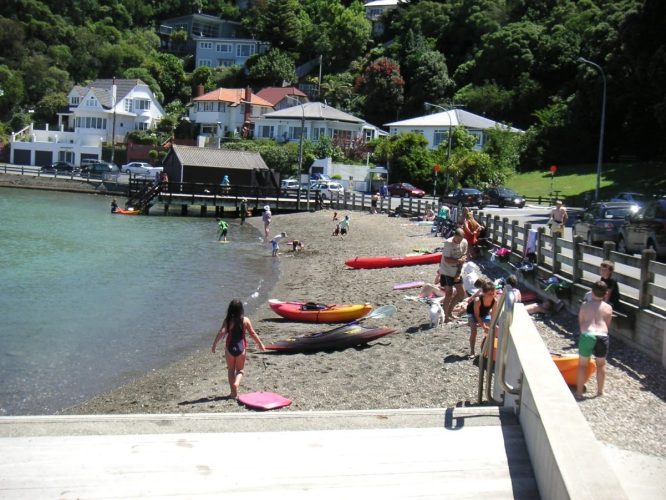PHOTO: Rhythm and Vines. NZHERALD
The Rhythm and Vines (R&V) music festival, held annually at Waiohika Estate in Gisborne, is renowned for attracting thousands of attendees from across New Zealand and beyond. In its latest edition, approximately 20,000 festival-goers converged on the 700,000 square meter estate, necessitating a comprehensive and collaborative clean-up effort to restore the site and surrounding areas.
Community Mobilization for Clean-Up
In the aftermath of the festival, up to 200 Gisborne community members have committed to a two-week clean-up operation. Among these dedicated individuals is Ryan Majstrović, a Japanese language teacher at Lytton High School, who, along with his students and other community volunteers, is actively participating in the restoration efforts. Majstrović highlights the diverse backgrounds of volunteers, noting that participants range from unemployed individuals to police detectives, all united in their commitment to environmental stewardship.
The involvement of Lytton High School serves a dual purpose: contributing to the community and fundraising for students’ extracurricular activities abroad. The festival organizers provide donations corresponding to the hours volunteers dedicate to the clean-up, fostering a symbiotic relationship between the event and the local community.
Rhythm and Vines head of operations Dan Turner. Photo: Supplied / Rhythm and Vines
Waste Management Strategies
Dan Turner, Head of Operations for Rhythm and Vines, outlines the extensive waste management strategies employed during and after the festival. Approximately 100 staff members are engaged in waste management roles, operating in shifts to ensure near-continuous coverage. Night shifts commence around 1 or 2 a.m., with teams working until 7 a.m. to patrol and service the festival grounds. Day shifts involve 70 to 80 personnel who manage waste throughout the event.
How Rhythm and Vines stays a financial and cultural HIT | WATCH
Following the festival’s conclusion, the clean-up extends beyond the immediate venue. Teams are dispatched to main routes leading to the festival site, collecting discarded rubbish from vehicles and ensuring thorough coverage, including side roads up to 100 meters away. Additionally, efforts are made to address litter in areas such as Gray’s Bush Scenic Reserve, which has previously been impacted by festival-related waste.
Rhythm and Vines has had a resource consent approved to expand its campsites to five, which will allow for up to 20,000 festivalgoers to stay overnight for the three-day music festival. Photo: Supplied / Rhythm and Vines
Environmental Initiatives and Challenges
A significant environmental challenge associated with large-scale festivals is the disposal of tents and camping equipment. Many attendees opt for inexpensive, single-use tents, leading to substantial waste. To mitigate this issue, Rhythm and Vines has implemented the Bookatent initiative, allowing festival-goers to hire tents. Since its inception in 2020, this program has reportedly reduced landfill waste by up to 40 tonnes.
Rhythm and Vines employs about 100 waste management staff during the event. Photo: Supplied / Rhythm and Vines
Furthermore, the festival has adopted measures to minimize environmental impact by ensuring that serveware and cutlery from onsite food vendors are biodegradable and compostable. The use of reusable cups and water bottles is also encouraged, aligning with the event’s commitment to sustainability.
Rhythm and Vines onsite food and drink vendors serve festivalgoers with biodegradable and compostable serveware and cutlery, as well as reusable cups and water bottles, to minimise the impact of the event on the environment. Photo: Supplied / Aaron Moffitt
Community Engagement and Environmental Responsibility
The collaborative efforts between Rhythm and Vines organizers and the Gisborne community underscore a shared commitment to environmental responsibility. By engaging local volunteers and implementing sustainable practices, the festival aims to minimize its ecological footprint while fostering a sense of communal achievement.
As Majstrović aptly observes, the clean-up process, though challenging due to factors like muddy conditions from heavy rain, is ultimately rewarding. The collective endeavor not only restores the natural beauty of Waiohika Estate but also reinforces the community’s dedication to preserving their environment for future generations.
Gisborne’s community members helping in the Rhythm and Vines 2024 clean-up efforts. Photo: Supplied / Rhythm and Vines
SOURCE: RNZ
















